Grey Phyllite
( 7 )
Color:
Country:
-
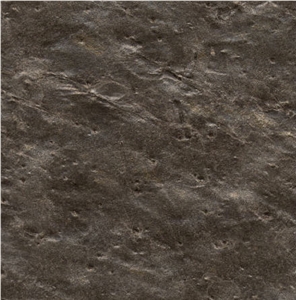 Additional Names:Otta Phyllite,Otta Slate,Otta Skifer,Otta Phylitt,Pillarguri Rust,Black Lace Phyllite,Otta Phyllit Pillarguri,Otta Pillarguri,Phyllit Pillarguri,Pillaguri,Pillarguri Noir,Pillargury Phyllite,Sell Pillaguri Phyllite,Pillarguri Sort QuartziteOtta Phyllite,Otta Slate,Otta Skifer,Otta Phylitt,Pillarguri Rust,Black Lace Phyllite,Otta Phyllit Pillarguri,Otta Pillarguri,Phyllit Pillarguri,Pillaguri,Pillarguri Noir,Pillargury Phyllite,Sell Pillaguri Phyllite,Pillarguri Sort QuartzitePost Request
Additional Names:Otta Phyllite,Otta Slate,Otta Skifer,Otta Phylitt,Pillarguri Rust,Black Lace Phyllite,Otta Phyllit Pillarguri,Otta Pillarguri,Phyllit Pillarguri,Pillaguri,Pillarguri Noir,Pillargury Phyllite,Sell Pillaguri Phyllite,Pillarguri Sort QuartziteOtta Phyllite,Otta Slate,Otta Skifer,Otta Phylitt,Pillarguri Rust,Black Lace Phyllite,Otta Phyllit Pillarguri,Otta Pillarguri,Phyllit Pillarguri,Pillaguri,Pillarguri Noir,Pillargury Phyllite,Sell Pillaguri Phyllite,Pillarguri Sort QuartzitePost Request Norway
-Phyllite
Norway
-Phyllite -
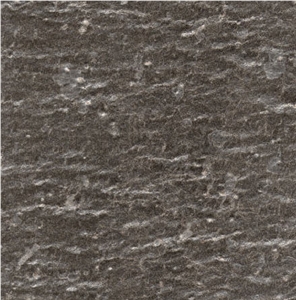 Additional Names:Hornblender Phyllite,Otta Phyllite,Otta Slate,Otta Skifer,Otta Phylitt,Pillarguri Rust,Pillarguri Sort,Black Lace Phyllite,Otta Phyllit Pillarguri,Otta Pillarguri,Phyllit Pillarguri,Pillaguri,Pillarguri Noir,Pillargury,Sell Pillaguri,Sel Royal SlateHornblender Phyllite,Otta Phyllite,Otta Slate,Otta Skifer,Otta Phylitt,Pillarguri Rust,Pillarguri Sort,Black Lace Phyllite,Otta Phyllit Pillarguri,Otta Pillarguri,Phyllit Pillarguri,Pillaguri,Pillarguri Noir,Pillargury,Sell Pillaguri,Sel Royal SlatePost Request
Additional Names:Hornblender Phyllite,Otta Phyllite,Otta Slate,Otta Skifer,Otta Phylitt,Pillarguri Rust,Pillarguri Sort,Black Lace Phyllite,Otta Phyllit Pillarguri,Otta Pillarguri,Phyllit Pillarguri,Pillaguri,Pillarguri Noir,Pillargury,Sell Pillaguri,Sel Royal SlateHornblender Phyllite,Otta Phyllite,Otta Slate,Otta Skifer,Otta Phylitt,Pillarguri Rust,Pillarguri Sort,Black Lace Phyllite,Otta Phyllit Pillarguri,Otta Pillarguri,Phyllit Pillarguri,Pillaguri,Pillarguri Noir,Pillargury,Sell Pillaguri,Sel Royal SlatePost Request Norway
-Phyllite
Norway
-Phyllite -
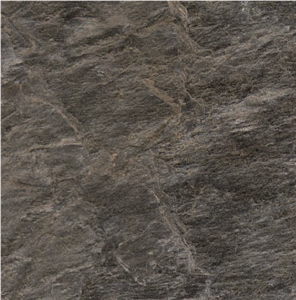 Additional Names:Hogseter Quartzite,Hogseter,Otta Phyllite,Hoegseter QuartziteHogseter Quartzite,Hogseter,Otta Phyllite,Hoegseter QuartzitePost Request
Additional Names:Hogseter Quartzite,Hogseter,Otta Phyllite,Hoegseter QuartziteHogseter Quartzite,Hogseter,Otta Phyllite,Hoegseter QuartzitePost Request Norway
-Phyllite
Norway
-Phyllite -
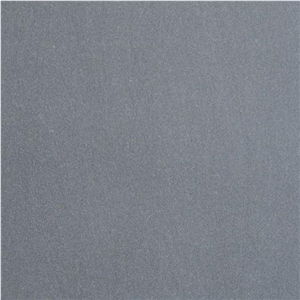 Additional Names:Pietra Morena Calcarenite,Pietra Arenaria Nera Anthracite,Pietra Morena PhyllitePietra Morena Calcarenite,Pietra Arenaria Nera Anthracite,Pietra Morena PhyllitePost Request
Additional Names:Pietra Morena Calcarenite,Pietra Arenaria Nera Anthracite,Pietra Morena PhyllitePietra Morena Calcarenite,Pietra Arenaria Nera Anthracite,Pietra Morena PhyllitePost Request Italy
-Phyllite
Italy
-Phyllite -
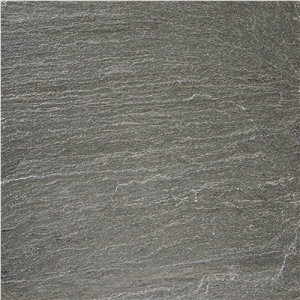 Additional Names:Riverstone Grey PhylliteRiverstone Grey PhyllitePost Request
Additional Names:Riverstone Grey PhylliteRiverstone Grey PhyllitePost Request Switzerland
-Phyllite
Switzerland
-Phyllite -
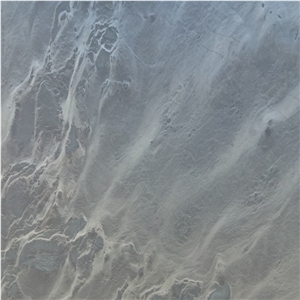 Additional Names:Grey Govia Phyllite,Govia Grey PhylliteGrey Govia Phyllite,Govia Grey PhyllitePost Request
Additional Names:Grey Govia Phyllite,Govia Grey PhylliteGrey Govia Phyllite,Govia Grey PhyllitePost Request Spain
-Phyllite
Spain
-Phyllite -
 Additional Names:Jbernardos Phyllite~Segovia Phyllite,El Castillo Phyllite,Bernardos Gray PhylliteJbernardos Phyllite~Segovia Phyllite,El Castillo Phyllite,Bernardos Gray PhyllitePost Request
Additional Names:Jbernardos Phyllite~Segovia Phyllite,El Castillo Phyllite,Bernardos Gray PhylliteJbernardos Phyllite~Segovia Phyllite,El Castillo Phyllite,Bernardos Gray PhyllitePost Request Spain
-Phyllite
Spain
-Phyllite
- 1
-
Can Phyllite be used indoors?Yes, phyllite can be used indoors as a decorative stone for building and construction purposes. It is commonly used for flooring, countertops, and walls. However, its hardness and durability depend on the specific type of phyllite and its metamorphic grade, so it is necessary to choose the right type and quality for indoor applications. Additionally, it is important to seal and maintain phyllite surfaces to prevent staining and other damages.Read More
-
Are there color variations of Norway's Pillarguri Phyllite?No, Norways Pillarguri Phyllite is mainly characterized by its dark green to grey-green color with occasional white quartz veins and few to no variations or streaks of other colors.Read More
-
Can Brazil's Anthracite Black Phyllite be used in landscaping?I do not have the specific information whether Brazils Anthracite Black Phyllite can be used in landscaping or not. However, phyllite is typically a high-grade metamorphic rock that is resistant to weathering and erosion, making it a suitable material for various applications such as tiling, roofing, and wall cladding. In landscaping, it may be used for features such as garden walls, rock steps, and even as a decorative rock. It is always recommended to consult with a professional landscaper or geologist to determine the suitability of specific rocks for landscaping purposes.Read More
-
Can India's Ocean Black Phyllite be used exterior applications in very rainy climates?Indias Ocean Black Phyllite is a type of natural stone that is commonly used for interior applications such as flooring, countertops, and wall cladding. However, using it for exterior applications in very rainy climates may not be the best idea. Phyllite is a metamorphic rock that is known for its weather-resistant properties, making it suitable for some outdoor applications. However, it is important to consider the specific conditions of the location where it will be installed. If the climate is characterized by heavy rains and high levels of moisture, there are a few factors that need to be taken into account: 1. Porosity: Phyllite, like many other natural stones, has varying levels of porosity. High porosity means that the stone will absorb more water, which can lead to water damage, staining, and the growth of mold or mildew. In very rainy climates, its important to choose a stone with low porosity to minimize the risk of water-related problems. 2. Freeze-Thaw resistance: In areas with cold temperatures and rain, the freeze-thaw cycle can be a concern. When water seeps into porous stone and freezes, it expands, which can lead to cracking or spalling. To withstand such conditions, its essential to choose a stone with good freeze-thaw resistance. 3. Slip resistance: Rainy climates often mean wet surfaces, and its crucial to ensure that the chosen stone offers adequate slip resistance to prevent accidents. Given these considerations, it is advisable to consult with a local stone supplier or a professional with expertise in the specific climate and characteristics of the site. They will be able to provide guidance on whether Indias Ocean Black Phyllite is suitable for use in exterior applications in very rainy climates or suggest alternative materials that may be more suitable.Read More
-
What is the coefficient of friction of Polished Norway's Pillarguri Phyllite tiles?I cannot access the latest information or conduct physical tests. Its best to consult the manufacturers or suppliers of the tiles for information on their coefficient of friction.Read More
-
How thick is Norway's Black Wave Phyllite slabs?The thickness of Norways Black Wave Phyllite slabs can vary depending on the specific quarry and the size of the slabs being extracted. Typically, phyllite slabs are available in thicknesses ranging from 1.5 to 3 centimeters (0.6 to 1.2 inches). However, it is always recommended to check with the supplier or quarry to get the specific thickness options they offer for Norways Black Wave Phyllite.Read More
-
Can Norway's Otta Phyllite be used in a bathroom?I dont have a definite answer to this question as it depends on different factors such as the physical and chemical properties of the Otta Phyllite, its resistance to water, and the intended use in the bathroom (for flooring, walls, countertops, etc.). Its best to consult with a professional stonemason or a supplier of Otta Phyllite to determine its suitability for use in a bathroom.Read More
-
How long does Phyllite last on outdoor floor coverings?I do not have access to current information about the specific durability of Phyllite as an outdoor flooring material. However, Phyllite is a highly durable and reliable material that has been used for outdoor flooring for centuries. Its lifespan can vary depending on factors such as climate, foot traffic, and maintenance. It is recommended to consult a professional before installing Phyllite or any other natural stone as an outdoor flooring material.Read More
-
What is the coefficient of friction of Chiseled Switzerland's Riverstone Phyllite tiles?I am not able to browse the internet or provide specific information about a certain type of tile. I suggest checking the product label or contacting the manufacturer for more information on the coefficient of friction of Chiseled Switzerlands Riverstone Phyllite tiles.Read More
-
Are there color variations of Czech Republic's Jilove Phyllite?Yes, there can be color variations of the Jilove Phyllite found in the Czech Republic. Jilove Phyllite is a metamorphic rock that can exhibit various shades of green, ranging from dark green to light green, as well as gray and sometimes even brown. These color variations occur due to the different mineral compositions and the varying degrees of metamorphism the rock has undergone.Read More
-
Is Norway's Lace Rust Phyllite an expensive stone?I do not have access to real-time market data to accurately answer this question. However, Norways Lace Rust Phyllite would fall under the semi-precious stones category and its price varies depending on its quality, size, color, and demand in the market. It would be best to check with local stone suppliers or dealers to know the current price range.Read More
-
Are there color variations of India's Ocean Black Phyllite?Indias Ocean Black Phyllite typically comes in shades of black and gray, with subtle variations in color due to natural variations in the stones composition. However, it is important to note that individual slabs or tiles of the stone may have slightly different color variations and patterns, as is the case with many natural stone materials.Read More
-
How much does 1m3 of Phyllite weight?The weight of 1m3 of Phyllite can vary depending on its density, but it typically weighs around 2,700 to 2,800 kilograms (2.7 to 2.8 metric tons).Read More
-
Can India's Ocean Black Phyllite be used in landscaping?Yes, Indias Ocean Black Phyllite can be used in landscaping. Phyllite is a type of metamorphic rock that has a smooth, shiny texture and is commonly used in construction and landscaping. Its dark black color and distinctive foliation lines give a unique and elegant look to outdoor spaces. It can be used for pathways, patios, garden walls, and other hardscaping features. Additionally, its durability and resistance to weathering make it suitable for outdoor use.Read More
-
Is Czech Republic's Jilove Phyllite an expensive stone?It is difficult to determine the exact cost of Czech Republics Jilove Phyllite as it depends on various factors such as quality, availability, size, and market demand. However, phyllite is generally considered an affordable stone compared to other more expensive varieties like marble or granite. It is best to check with local suppliers or stone experts in the Czech Republic for specific pricing information.Read More
-
Can Norway's Pillarguri Phyllite be used in landscaping?Yes, Norways Pillarguri Phyllite can be used in landscaping. Pillarguri Phyllite is a type of natural stone that is known for its beauty and durability. It has a unique texture and color that can enhance the overall aesthetic of a landscape. It can be used for various purposes such as creating pathways, retaining walls, steps, or as decorative stones in gardens. Its versatility and ability to withstand different weather conditions make it a popular choice for landscaping projects.Read More
-
Can Norway's Pillarguri Rust Phyllite be used indoors?Yes, Pillarguri Rust Phyllite can be used indoors for flooring, wall cladding, and decorative purposes. However, its important to ensure that the specific qualities and characteristics of this stone are suitable for its intended use and that it meets the safety and durability requirements of your project. Its also crucial to properly seal and maintain the stone to prevent staining and damage. Consulting with a professional contractor or stone supplier can help ensure that you make an informed decision about using Pillarguri Rust Phyllite indoors.Read More
-
How thick is Norway's Pillarguri Phyllite slabs?I cannot access the current thickness of Norways Pillarguri Phyllite slabs. It would be best to contact a geological or construction expert for precise information.Read More
-
Are there color variations of Norway's Sel Royal Phyllite?No, the Norway Sel Royal Phyllite is a specific type of phyllite and typically has consistent coloration. It is characterized by a dark grey background color with bands of lighter and darker shades of grey running through it.Read More
-
Can Norway's Pillarguri Sort Phyllite be used in landscaping?Yes, it is possible to use Norways Pillarguri Sort Phyllite in landscaping. Phyllite is a type of metamorphic rock that has a smooth texture and is often used in landscaping projects for its aesthetic appeal. It can be used for various purposes such as paving, wall cladding, and decorative stone features. However, the specific use of Pillarguri Sort Phyllite would depend on its color, size, and availability in the market. It is recommended to consult with a landscape designer or supplier to determine the best way to incorporate it into your landscaping project.Read More






